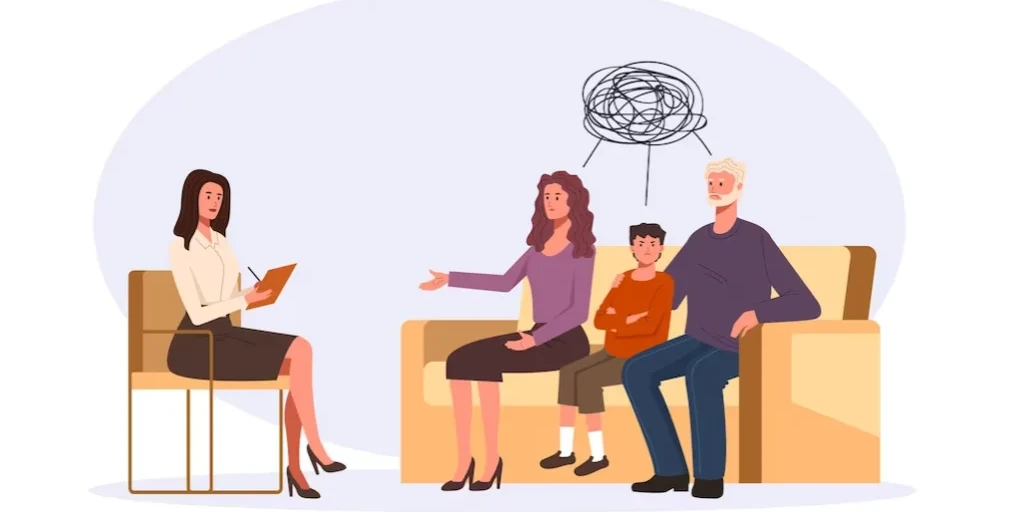24/7 Helpline:
(866) 899-221924/7 Helpline:
(866) 899-2219
Learn more about Eating Disorder Treatment centers in Half Moon Bay
Eating Disorder Treatment in Other Cities

Other Insurance Options

Health Partners

Health Net

Carleon

Sliding scale payment assistance

Holman Group

Lucent

Oxford

EmblemHealth

Premera

Evernorth

American Behavioral

Private insurance

Absolute Total Care

Horizon Healthcare Service

Coventry Health Care

WellPoint

CareSource

Optima

BHS | Behavioral Health Systems

Cigna

Coastside Mental Health
Coastside Mental Health is a public rehab located in Half Moon Bay, California. Coastside Mental Hea...

El Centro de Libertad – The Freedom Center
El Centro de Libertad – The Freedom Center is a non-profit rehab located in Half Moon Bay, Californi...





Asian American Recovery Services
Asian American Recovery Services is an outpatient rehab located in Daly City, CA. Asian American Rec...

BAART Programs San Mateo
BAART Programs is an outpatient clinic who provides methadone treatment and substance use counseling...

Horizon Services – Palm Avenue Detox
Horizon Services - Palm Avenue Detox provides social detoxification for individuals struggling with ...

StarVista – Insights Adolescent Treatment Program
StarVista – Insights Adolescent Treatment Program is a non-profit rehab located in Redwood City, Cal...

Women’s Recovery Association – Laurel Avenue
Women's Recovery Association is a program by HealthRIGHT 360 located in San Mateo, California. Women...

South County BHRS Outpatient Clinic
South County BHRS Outpatient Clinic is a public rehab located in Redwood City, California. South Cou...

Potentials Unlimited Clean & Sober Living Environment
Potentials Unlimited Clean & Sober Living Environment is a private rehab located in San Mateo, Calif...

Sitike Counseling Center
Sitike Counseling Center is a non-profit counseling clinic located in South San Francisco, CA. Sitik...

Psychiatric Services – Medical Center
Psychiatric Services – Medical Center is a public rehab located in San Mateo, California. Psychiatri...

El Centro de Libertad – The Freedom Center
El Centro de Libertad – The Freedom Center is a private rehab located in Redwood City, California. E...

Project Ninety – Elliott Center
Project Ninety - Elliott Center offers inpatient services for men with alcohol and/or substance addi...

Women’s Recovery Association – the Elms
Women’s Recovery Association – the Elms is a private rehab located in San Mateo, California. Women’s...

Service League of San Mateo County – Hope House
Service League of San Mateo County - Hope House is a private rehab located in Redwood City, CA. Serv...

StarVista – Adolescent Substance Abuse Program
StarVista – Adolescent Substance Abuse Program is a non-profit rehab located in Daly City, Californi...

Our Common Ground
Our Common Ground was founded in 1988 and has provided substance abuse treatment for over three deca...

StarVista – Archway
StarVista - Archway is a private counseling clinic located in Redwood City , CA. StarVista - Archway...

Project Ninety – Friendship Hall
Project Ninety - Friendship Hall offers outpatient treatment for individuals in need of substance ab...

















Freedom Center
Freedom Center is a private rehab located in Redwood City, California. Freedom Center specializes in...

Latino Alcohol and Drug Abuse Services
Latino Alcohol and Drug Abuse Services is a private rehab located in San Bruno, California. Latino A...

Skywiew Therapeutic Day School – Behavioral Services
Skywiew Therapeutic Day School – Behavioral Services is a public rehab located in San Bruno, Califor...

Project Ninety – Betts House
Project Ninety – Betts House is a non-profit rehab located in San Mateo, California. Project Ninety ...

The Addictions Institute
The Addictions Institute is privately owned treatment for individuals struggling with addiction. Ser...

Pyramid Alternatives
Pyramid Alternatives is a private rehab located in Pacifica, California. Pyramid Alternatives specia...

AA – Alcoholics Anonymous
AA – Alcoholics Anonymous is a non-profit rehab located in San Mateo, California. AA – Alcoholics An...

The Sequoia Center
The Sequoia Center is a private rehab located in Redwood City, California. The Sequoia Center specia...

Project Ninety
Project Ninety is a non-profit traditional rehab located in San Mateo, California. Project Ninety of...

The Latino Commission on Alcohol and Drug Abuse Services – Casa Maria
The Latino Commission on Alcohol and Drug Abuse Services - Casa Maria offers a state-licensed reside...

Redwood House
Redwood House is a private rehab located in Redwood City, California. Redwood House specializes in t...

North County Mental Health
North County Mental Health is a public rehab located in Daly City, California. North County Mental H...

Behavioral Health Psychology Services
Behavioral Health Psychology Services is a privately owned counseling clinic for individuals struggl...

Cielo House Eating Disorder Treatment
Cielo House Eating Disorder Treatment is a private rehab located in Moss Beach, California. Cielo Ho...

Center for Discovery Menlo Park
Center for Discovery Menlo Park is a private rehab located in Menlo Park, California. Center for Dis...

Project Ninety Simmons House
Project Ninety Simmons House is a private rehab located in San Mateo, California. Project Ninety Sim...

Nathan Brody Chemical Dependency
Nathan Brody Chemical Dependency is a private rehab located in Belmont, New Hampshire. Nathan Brody ...

Carolinas Counseling and Consulting
Carolinas Counseling and Consulting is a private rehab located in Belmont, North Carolina. Carolinas...

Crossroads Counseling Services – Awakenings
Crossroads Counseling Services - Awakenings offers a residential treatment for women with chemically...

Crossroads Counseling Services – New Outlook
Crossroads Counseling Services - New Outlook is a halfway house for men in recovery from alcohol and...

































































































































































































































